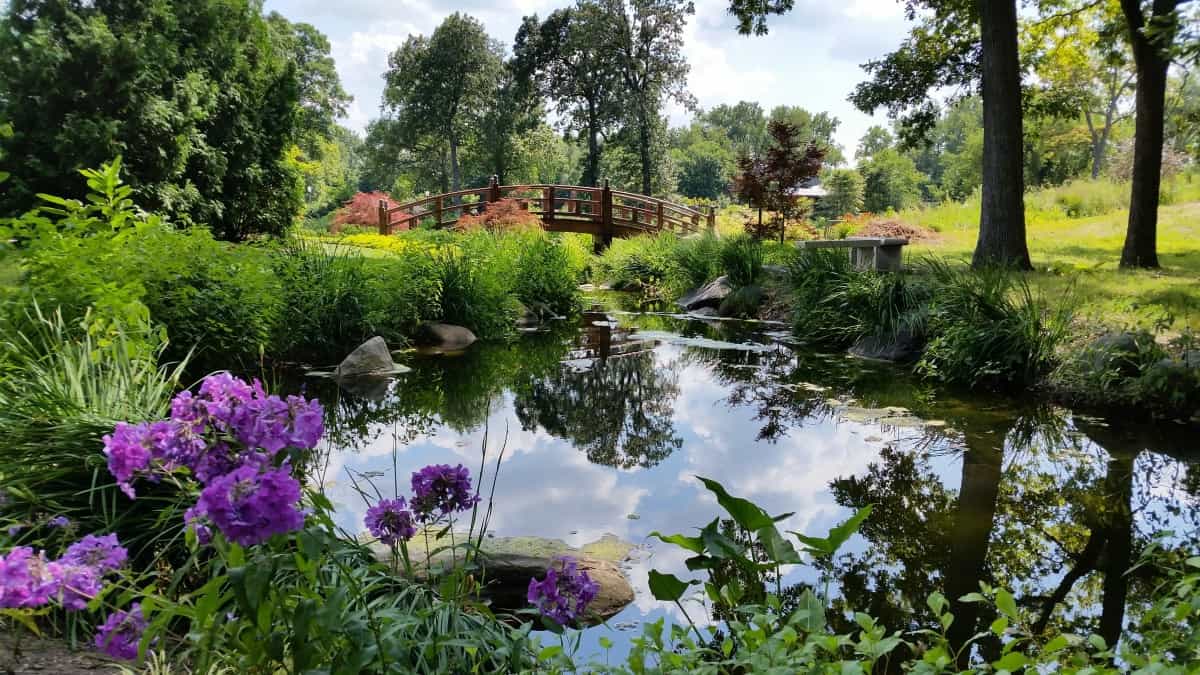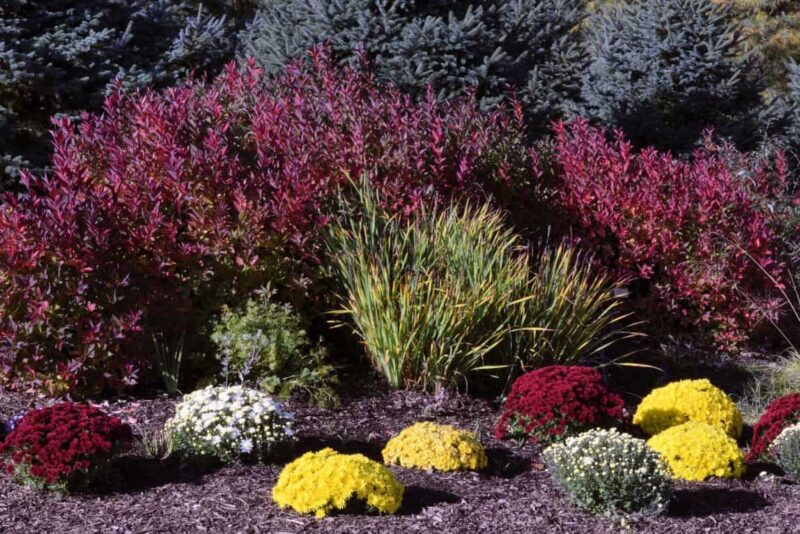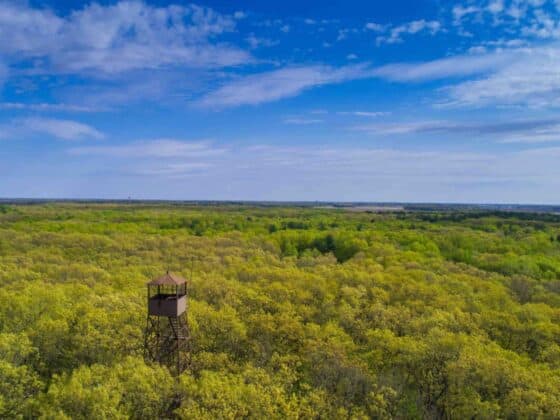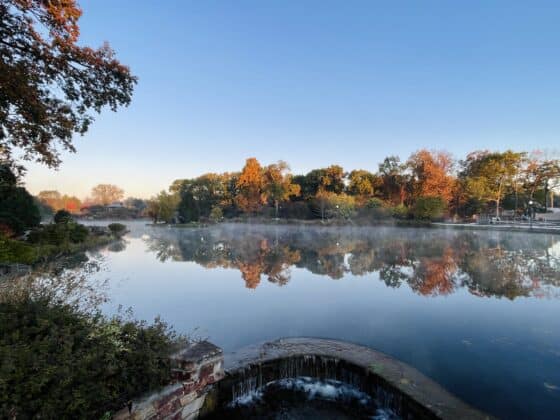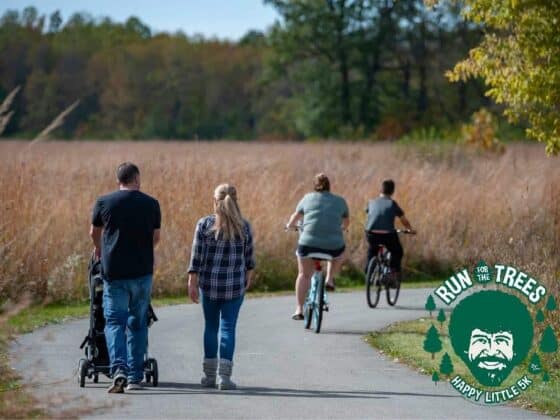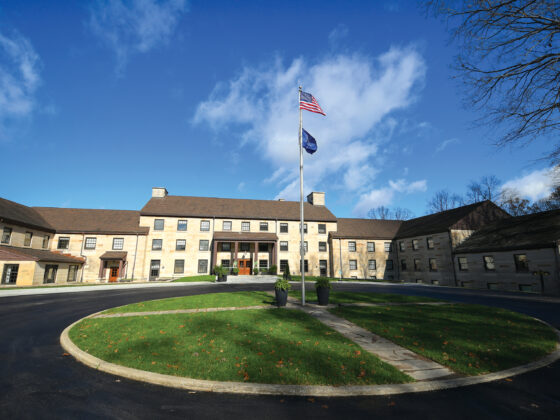Botanic Gardens Conservation International defines botanical gardens as “institutions holding documented collections of living plants for the purposes of scientific research, conservation, display and education.” But not only are Indiana’s botanical gardens beautiful and educational, they are the perfect destinations for inspiration, serenity, and peace. And certainly worth the road trip.
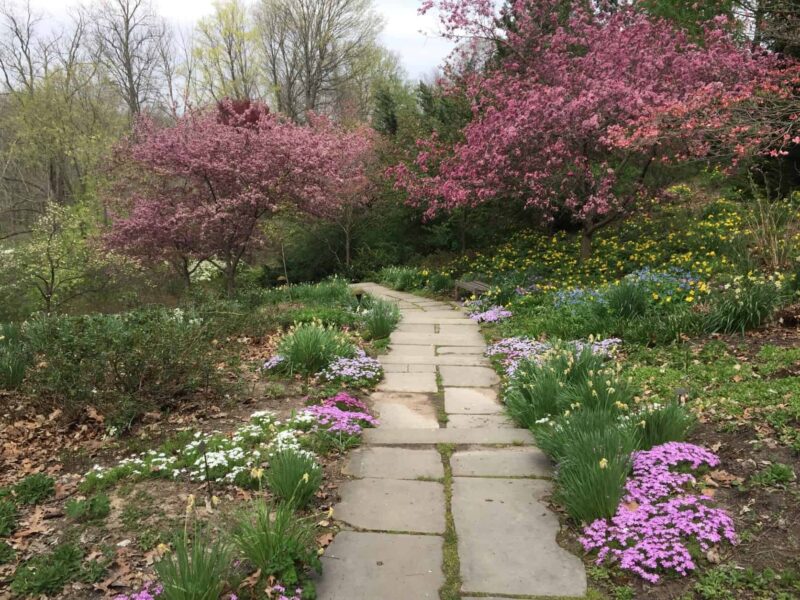
300-acre Taltree Arboretum and Gardens in Valparaiso is a delight of wetlands, woodlands, prairies and gardens, including the Hitz Family Rose Garden. Crisscrossed with walking trails and brimming with wildflowers, cultivated blooms, and native grasses, it is home to wildlife such as herons, wild turkeys, purple finches, frogs, warblers, turtles, bobolinks and a beaver or two. Taltree’s collections include the Oak Islands exhibit with more than 40 different oak species from all over the globe, and the Welcome Garden with its vast plantings of viburnum and Native Plant Garden.
The 106-acre International Gardens in Michigan City, just blocks away from the Blue Chip Casino but seemingly in a different world, are an oasis of tranquility and beauty. Located on land that was once the home of the Pottawatomi Indians, this heritage and traditions are showcased in the Native American garden here, one of six that highlight the gardening customs of the world.
Shiojiri Niwa, a peaceful setting of bridges, flowers, waterways and trees comprising different vignettes, connect one to the other enticing visitors into the different landscapes that comprise this Japanese-style garden. Located in South Bend, Shiojiri Niwa is one of only a handful of Japanese gardens in Indiana. One of the unique highlights is a zigzag bridge. Japanese legends say that evil spirits can only move in straight lines. So if they’re ever in pursuit, head for such a bridge. The spirits, fortunately, unable to zig end up in the water. More prosaically, the design forces walkers to pay attention to where they’re going and thus enjoy their surroundings more.
Take a stroll around the two lakes that dot the 1,250-acre Notre Dame campus, stopping at the Grotto of Our Lady of Lourdes, a one-seventh-sized replica of the famed shrine in Lourdes, France, where the Virgin Mary appeared to Saint Bernadette 18 times in 1858. A favorite of the University’s founder, Father Sorin, he vowed to reproduce it on the Notre Dame campus, a dream that became possible from a donation made by a former student. In 1896, boulders, some weighing two tons or more, were moved from nearby farms to construct the stone grotto with its niches for statuary and candles. Read the letter written by Dr. Tom Dooley, known as the Jungle Doctor of Laos, as he lay dying in a far-off land. His longing for the grotto will bring tears to your eyes.
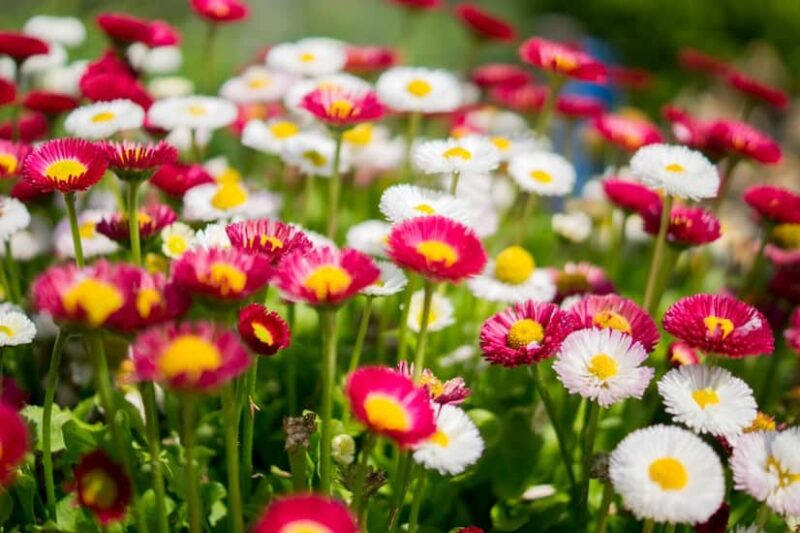
The Wellfield Botanic Gardens, just a few blocks north of Elkhart’s historic downtown, encompasses 36 acres which includes18 acres of water and is located where, since the mid 1800s, the city has drawn its water. The gardens (over 20 in all) include the Waterfall, English Cottage and Japanese and are arranged around a large pond and also near Christiana Creek. There are statues and walkways and seating areas for rest and contemplation.
A part of Fort Wayne’s bustling downtown, Foellinger-Freimann Botanical Conservatory is really three different gardens under glass–a Southwest desert garden filled with cacti, succulents, ironwood trees and yuccas, a showcase garden with a changing exhibit each quarter, and a tropical garden filled with palms and orchids with a pond and 2-story waterfall. Family friendly, the conservatory also features outdoor gardens, hands-on exhibits for children, and hosts events for children.
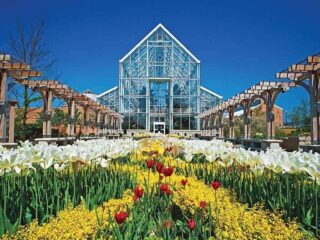
The Hayes Arboretum in Richmond is 466 acres of woodlands, meadows, swamps and streams; unique plant, rock and fossil collections; as well as miles of hiking and running paths. Other features found on this property include 3% of Indiana’s old growth forest, as well as many acres of reforested woods. An 1833 dairy barn acts as their Nature Center and is filled with exhibits on regional flora and fauna. There’s an active beehive behind glass, bird viewing room, and the Hayes Museum. Interspersed with walking, biking (#6 in the Top 10 Indiana Best Trails) and even a driving trail, there are also several Adena and Hopewell Indian mounds
Indianapolis is fortunate to have several wonderful botanical gardens including The White River Gardens at the Indianapolis Zoo, the first in the country to be accredited as a zoo, an aquarium, and a botanical garden by the Association of Zoos and Aquariums and the American Association of Museums. An urban oasis, the gardens are comprised of the indoor 5,000 square foot Hilbert Conservatory, the 65-foot ceiling and surrounding glass creates a tropical oasis. Outside, there’s the DeHaan Tiergarten (German for animal garden) with its ever changing design and blooming plants.
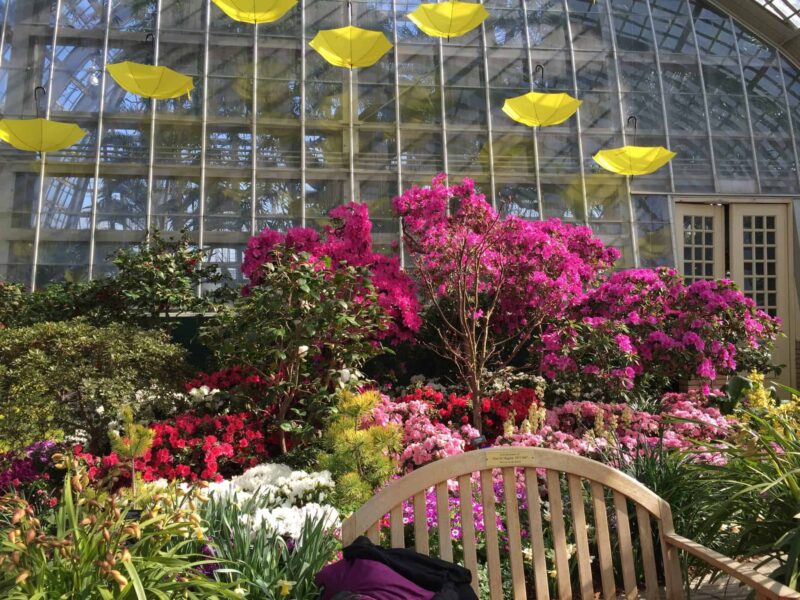
The 10,000-square-foot Garfield Park Conservatory, designed by the world renowned German landscape architect George Kessler, brims with hundreds of tropical plants from around the world. Their Sunken Garden is a graceful paean to European classical formal gardens with three acres dotted with fountains, symmetrical flower beds, concrete urns and bowls, all maintained as Kessler would have in the 1910s.
Bordered by the White River as it flows through downtown Indianapolis, 100 Acres: The Virginia B. Fairbanks Art & Nature Park, part of the Indianapolis Art Museum (IMA), is one of the largest museum art parks in the U.S. It’s a succession of landscape journeys leading from its entrance along paths to inaugural artworks and the Ruth Lilly Visitors Pavilion. 100 Acres features many natural features such as a lake, marsh, and meadow. The park abuts to the 54-acre grounds of the IMA, which also features lovely gardens such as the formal and historic gardens centered around the Oldfields-Lilly House & Gardens, a National Historic Landmark. The Oldfields gardens were designed in the 1920s by the wonderfully named Perceval Gallagher of Olmsted Brothers, the famed firm that created Central Park in New York.
Located in tiny Hazelton in southwestern Indiana, Azalea Path Arboretum and Botanical Gardens may be somewhat off the beaten path, but this 60-acre park, where more than 3,000 colorful azaleas bloom each spring, is well worth the trip. Said to be one of the largest collections of azaleas in the Midwest, the botanical gardens, with its two spring-fed lakes, waterfall, koi pond, three miles of walking paths, chainsaw carvings and sculptures, also is home to native and imported trees and many unique plants.


